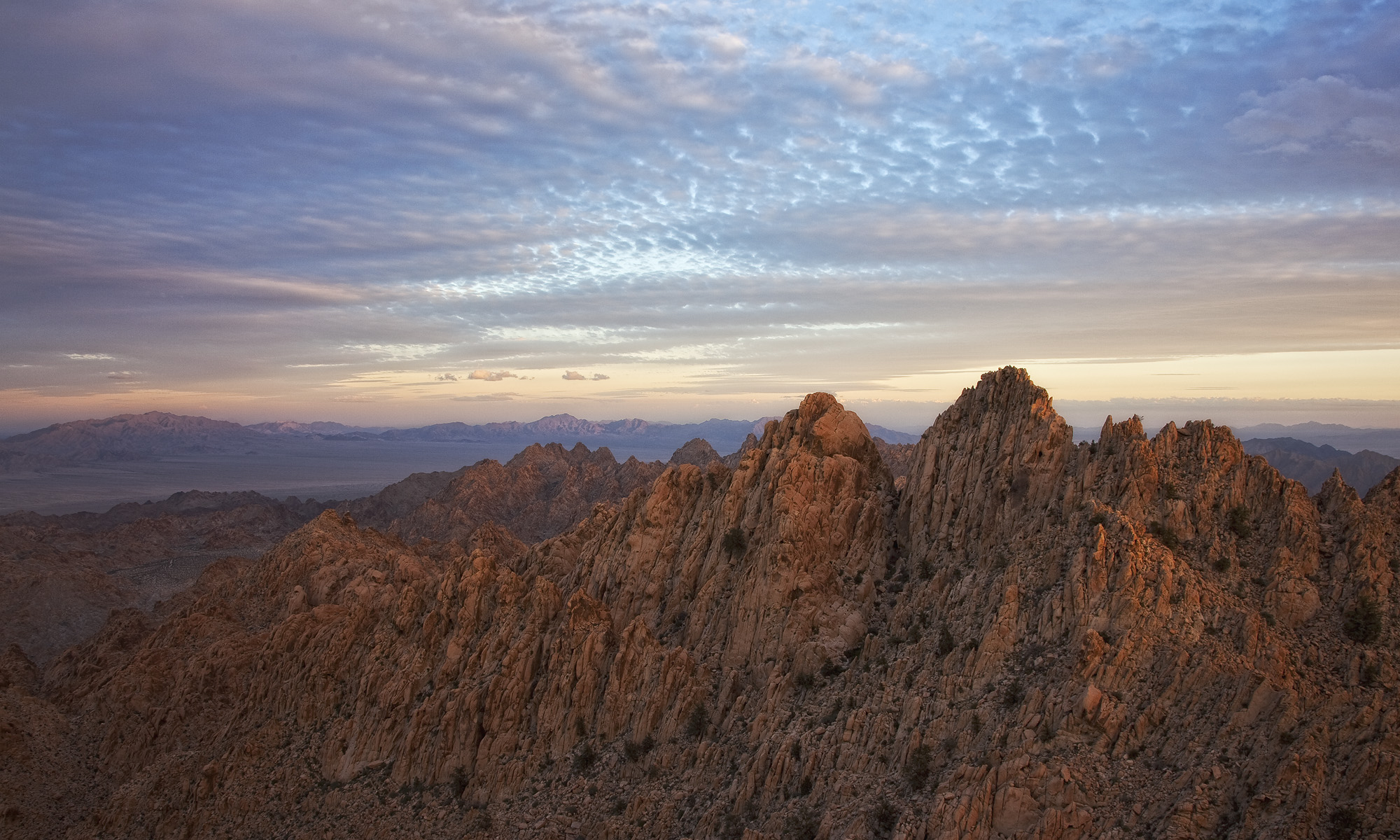The Wilderness Project is my photographic documentation of the federally-designated wilderness areas in Riverside County, where I live in southern California. In addition to several desert wilderness areas created by the California Desert Protection Act of 1994 (CDPA), Riverside County is also home to wildernesses in sky island mountain ranges like the San Jacinto and Santa Rosa Mountains, as well as sage scrub habitats like the Agua Tibia Wilderness, and I will photograph these as well. The goal of the project is to celebrate the diversity of landscapes we have set aside to protect, and to show them to people who may not be aware they exist.
San Mateo Canyon Wilderness
The San Mateo Canyon Wilderness is located in the Santa Ana Mountains between Riverside and Orange Counties. Chaparral-covered hillsides, deep canyons, and huge sycamores and coast live oaks characterize the entire mountain range. The landscape is remarkably rugged. The single winding and twisted highway through the Santa Anas attracts hordes of motorists and hikers.
Far away from the hand of man, however, there is a curious evolutionary arms race playing out deep in the leaf litter and creek bottoms of San Mateo Canyon Wilderness. This story involves sordid sex and incredibly poisonous animals, and it’s one that surprised even me.
Continue reading “San Mateo Canyon Wilderness”Santa Rosa Wilderness
For centuries, the Cahuilla People used trails winding through the Santa Rosa Mountains to move in and out of California’s Coachella Valley; these mountains were their pathway to the west. They shared those foothills with the largest herd of peninsular bighorn sheep in the United States. Today the sheep move up and down the steep eastern flank of the Santa Rosas following the availability of food. The Santa Rosa Mountains are truly the home of ancient paths.
Continue reading “Santa Rosa Wilderness”Beauty Mountain Wilderness
For me, a simpleton, the inherent value in keeping spaces open is pretty obvious. These swaths of land are what some people might call ‘uninhabited’ (this term is receiving some rightful pushback) or ‘wild.’ Indeed, people from all walks of life can relate to wild nature. In the West at least, most of our wild places are public land. I believe that public lands are as great a unifier as we might find right now given the divided political nature of our country. The Beauty Mountain Wilderness is a great example.
Continue reading “Beauty Mountain Wilderness”Big Maria Mountains Wilderness
The Big Maria Mountains are just north of Blythe, California and run parallel to the Colorado River. From the high point of the range, you might think you could throw a rock and hit Arizona. Two Wildernesses protect the range: the Big Maria Mountains Wilderness and the Rice Valley Wilderness. I enjoyed some socially-distanced time in the Big Maria Mountain Wilderness at the end of 2020–a peaceful end to a very crazy year.
Continue reading “Big Maria Mountains Wilderness”Cahuilla Mountain Wilderness
I often think of southwest Riverside County as the home of the sky island mountains. The Cahuilla Mountain Wilderness–and its namesake mountain–is no exception to this. Rising to more than 5,500′, the Cahuilla Mountain Wilderness is home to diverse plant and animal species, great views, and historic significance.
Continue reading “Cahuilla Mountain Wilderness”Orocopia Mountains Wilderness
The Orocopia Mountains are another of the desert wilderness areas in Riverside County. Designated in 1994 as part of the California Desert Protection Act, this wilderness protects unique plant species and has an interesting geological history.
Continue reading “Orocopia Mountains Wilderness”Little Chuckwalla Mountains Wilderness
Contrary to their name, the Little Chuckwalla Mountains certainly don’t lack for big views. You won’t find a lack of imposing topography, any water, and you’re unlikely to run into anyone else out there, hardly making them the little sibling of the Chuckwalla Mountains to the west. If you’re looking for solitude in a rugged desert landscape, the Little Chuckwalla Mountains Wilderness may be for you.
South Fork San Jacinto Wilderness
In the foothills of the San Jacinto Mountains, the South Fork of the San Jacinto River slips along unnoticed next to the highway that most visitors zoom up to get to the popular mountain town of Idyllwild and the hiking destination of the San Jacinto Wilderness. Ribbonwood and manzanita dominate the lower elevations in the San Jacintos and, admittedly, the South Fork of the San Jacinto River watershed (and the Wilderness that protects it) looks pretty unremarkable. However, I was reminded after several visits that sometimes the best gifts come wrapped in plain paper.
Chuckwalla Mountains Wilderness
To the east of the Mecca Hills Wilderness and southeast of Joshua Tree National Park lie the Chuckwalla Mountains. The Chuckwallas are more or less continuous with the Little Chuckwalla Mountains; together these ranges form an imposing range of mountains separating the Interstate-10 corridor from desert areas further south. Despite their proximity to the heavily traveled Interstate-10, the Chuckwallas carry with them an almost certainty of solitude and quiet.
Joshua Tree Wilderness
The Joshua Tree Wilderness is probably the best known (and most accessible) of Riverside County’s wilderness areas. Joshua Tree National Monument was designated in 1936, and it became a national park in 1994, when the California Desert Protection Act (CDPA) was passed. Several laws have added to the Joshua Tree Wilderness, which today comprises about 85% of Joshua Tree National Park; the the entire wilderness is managed by the National Park Service. Continue reading “Joshua Tree Wilderness”
